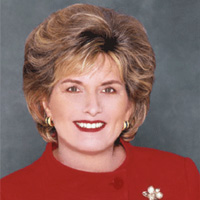
February 2004
Looking Back, Looking Ahead — Great Goals!
We're already a month into 2004 and by now some of your New Year's Resolutions are probably broken! So why not start over and think about what you really want to accomplish this year — in both your professional and personal life.
Let's start by reviewing 2003. List the 10 best things that happened to you last year: completed a big project, sold a big account, won an award, learned new skills, attended special family events, lost weight — anything good you can think of. It's important that you do this step first.
Then start in on the things 'that didn't go so well': failure to hit your performance goals, bad habits still not gone, sickness, sadness. Take a moment to look over this list and evaluate how many of those were mostly under your control. If you're like me — probably most of them.
So now what? It's time to create a terrific next year for you! Imagine it's December 31, 2004 and as you look back, you realize that 2004 was a great year! What did you achieve? What did you improve? What “bad” things did you fix or eliminate?
Be very specific as you create this 2004 Great Goal Plan. When you're done, ask yourself this question, “If I really accomplished all of (or most of) these things would I be proud, confident, happy…. or just plain better?” These are the great things you're predicting will happen.
Now some of us are born compulsive goal setters (I'm one of them — I started making “To Do” lists when I was 5… Each one started with #1 “Get up” — so I had at least one thing I could check off everyday!) In my adult years I have gotten even more structured. After I set my yearly goals, I create quarterly, monthly and weekly goals. If you are inclined in this direction there are now even software programs that can help you with this type of goal setting process (mygoals.com or goalmaker.com).
If, on the other hand, this type of goal setting would drive you nuts, no need to worry. Our incredible brains help us out. Apparently once we think about something we want to accomplish, the part of our brain called the Reticular Activating System goes on alert and keeps sending us reminders.
Up until now, I've described this goal setting process as one that you can use for your individual goals. Why not use it with your team at work — or your family. This is the first year I asked Carylyn, our 8 year-old daughter, what she wanted to do in 2004: (“learn how to play pokemon”).
A word of caution — just like the adage “Don't look backwards”. I strongly believe that if we only look and work forward we'll miss the wonderful moments of today.
THE POWER OF FULL ENGAGEMENT
by J. Loehr & T. Schwartz
One of the biggest complaints I hear from our clients is this: “We had a great goal setting session, but then we couldn't find the time to accomplish them”.
In their best selling book, The Power of Full Engagement, Loehr and Schwartz argue that the numbers of hours in a day are fixed, but the quantity and quality of our energy is not. These authors have coached athletes such as Monica Seles and Dan Jansen, as well as countless executives, in how to create and sustain high performance.
Just as athletes train, play and then recover, professionals and executives need to recognize their energy levels and establish rituals and routines that optimize their productivity when they're “on” and rejuvenate their energy when they're “off”.
While the book is written for individuals who want to achieve great goals, there are lessons to be learned for teams as well:
What team behaviors give us energy boosts?
What rituals could we establish to sustain high performance?
What activities could we use to "recover" our energy?
This book provides a roadmap for helping you and your team stay focused and energized. Execution of your great goals and strategies is what's at stake here.
Actions for Results: Tips & Tools for Achieving Great Goals!
Identify Your Successful Energy Patterns: Analyze past goals and milestones that you have successfully completed. Write out your “Patterns of Success” (e.g., what happened at each step along the way). Make sure you repeat them.
Don't Live in “The Gap”: When you set aspirational goals, it is easy to focus on the obstacles and the effort it will take to bridge the gap between your goals and current reality. Instead, keep focused on progress to springboard you to the next level of achievement.
Pay Attention to Unexpected Gems: As you pursue your goals you may encounter opportunities that you could not have anticipated. Pursue them, particularly if they are aligned with your longer-term goals.
“We were all inspired by your presentation on 'The Leader's Legacy.' If you don't mind, I'd like to pass on some of your thoughts to the rest of the organization.”
Bonnie Lieberman
Senior Vice President
& General Manager
John Wiley & Sons, Inc
Ask or Tell We want to hear from you- whether it is a question or a suggestion! Are you or your organization facing a particular performance challenge? Leadership issues? Turf wars instead of teamwork? Struggling with a major change? Expanding globally, but not collaborating across borders? Frustrated with lack of business growth? |







